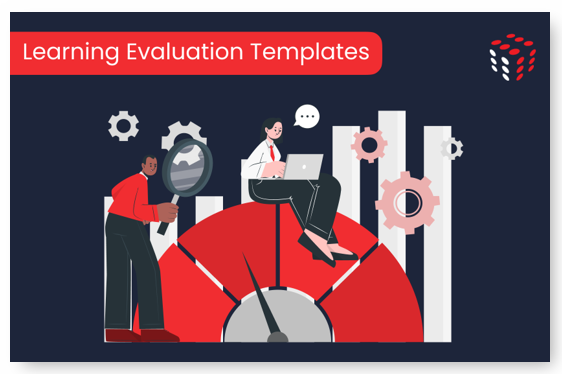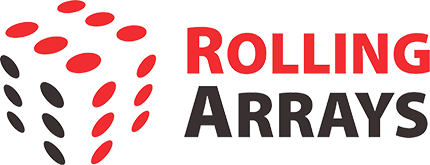
Whitepaper
Coaching vs Training
What is the Difference and
How to Choose the Right
Approach for Your Organization?
Learning Evaluation Templates Included


Table of Contents

Learning Evaluation Templates
Basic templates to track metrics like knowledge gain, skills improvement, productivity impact etc. can be designed quite easily to include in an appendix.
RESOURCES > WHITEPAPER > Coaching vs Training: What is the Difference and How to Choose the Right Approach for Your Organization?
Pursuing personal and organisational growth has become paramount in today’s rapidly evolving professional landscape. Two main approaches have emerged to facilitate this growth: coaching and training. While both aim to enhance individual and team performance, their principles, methodologies, and outcomes differ. This whitepaper comprehensively compares coaching and training, exploring their definitions, scope, effectiveness, cost considerations, and applications. By understanding the distinctions and advantages of each approach, organisations and individuals can make informed decisions regarding their development strategies. Whether unlocking untapped potential or acquiring new skills, this whitepaper guides navigating the nuanced landscape of coaching and training, aiding in sustainable growth and success.
Definition and Scope
Coaching and training are distinct approaches to fostering development and growth, each with unique characteristics and objectives. Understanding their definitions and scope is essential to grasp the fundamental differences between the two.
Coaching is a collaborative and personalised process focusing on individual growth, maximising potential, and achieving specific goals. It involves a professional coach facilitating self-discovery, supporting skill development, and encouraging behavioural changes. The primary objective of coaching is to empower individuals to overcome challenges, enhance performance, and unlock their full potential.
Conversely, training is a systematic process to impart knowledge, skills, and competencies required for specific tasks or roles. It typically follows a standardised curriculum or program and involves instructional methods such as lectures, workshops, and practical exercises. The key objective of the training is to ensure individuals acquire the necessary knowledge and skills to perform specific tasks efficiently.
Coaching and Training Differ in Several Aspects:
| Coaching | Training | |
|---|---|---|
| Focus | Centres around individual growth, self-awareness, and personal transformation | Emphasises acquiring specific skills or knowledge |
| Approach | Takes a personalised and collaborative approach, focusing on questioning, active listening, and goal setting | Follows a structured curriculum and relies on instructional methods to deliver content |
| Timeframe | Often an ongoing process that spans an extended period, enabling continuous improvement and development | Usually, a more time-bound activity with a defined duration for acquiring specific skills or knowledge |
| Customisation | Highly tailored to the individual's needs, preferences, and goals, allowing for personalised guidance and support | Tends to have a standardised approach, aiming to deliver consistent content to a broader audience |
Organisations and individuals can determine which approach aligns best with their developmental objectives and the specific outcomes they seek to achieve by understanding the distinctions in definition and scope between coaching and training.
Key Principles and Approaches
Coaching and training follow different principles and employ distinct approaches to achieve their objectives. Understanding these principles and approaches is crucial in comprehending the effectiveness and impact of each method.
Coaching Principles and Methodologies:
- Individualised development: Coaching recognises that each individual has unique strengths, challenges, and aspirations. It focuses on tailoring the development process to meet the specific needs and goals of the individual, fostering a more personalised and impactful experience.
- Active listening and questioning: Coaches employ listening skills to deeply understand the coachee’s perspective, challenges, and aspirations. They use powerful questioning techniques to stimulate self-reflection, insight, and the coachee’s ability to find their solutions.
- Goal setting and accountability: Coaches work with individuals to define clear, actionable goals that align with their vision and aspirations. They help establish accountability mechanisms to track progress, maintain focus, and ensure commitment to personal growth.
Training Principles and Methodologies:
- Standardised content delivery: Training programs often follow a structured curriculum, covering specific topics or skills required for a particular role or task. The content is designed to be consistent and standardised across the audience, ensuring uniformity in knowledge transfer.
- Instructional techniques: Training utilises various instructional methods such as lectures, demonstrations, case studies, simulations, and hands-on exercises. These techniques impart knowledge, demonstrate skills, and provide practical experience.
- Skills acquisition and practice: Training emphasises acquiring specific skills through repetitive practice and reinforcement. Participants engage in activities that allow them to apply newly acquired knowledge and skills, facilitating skill development and mastery.
By understanding the fundamental principles and approaches employed in coaching and training, individuals and organisations can assess which method aligns better with their desired outcomes, preferred learning styles, and the skills or growth, they seek to achieve.

Unlock Your Learning Impact
Measure Progress with Proven Evaluation Templates
The Key Benefits:
- Quantify the impact
- Tailor to your needs
- Actionable insights
- Boost engagement
Effectiveness and Impact
Evaluating the effectiveness and impact of coaching and training is essential to gauge their outcomes and determine their value in achieving desired developmental goals. Organizations and individuals can make informed decisions regarding their development strategies by examining each approach’s evaluation criteria and results.
Evaluating Coaching Outcomes:
- Measuring behavioural change and growth: Coaching focuses on personal and behavioural transformation. Evaluation criteria can include changes in mindset, behaviour, attitudes, and individual growth indicators such as increased self-awareness, confidence, and resilience.
- Assessing individual and team performance: Coaching can directly impact individual and group performance. The evaluation may involve performance assessments, stakeholder feedback, and tracking key performance indicators to measure improvements resulting from coaching interventions.
- Tracking long-term impact: Coaching often aims for sustainable growth and long-lasting change. Evaluating long-term impact can involve assessing the maintenance of positive changes, continued growth, and the ability to apply coaching insights and skills over time.
Evaluating Training Outcomes:
- Assessing knowledge retention and application: Training imparts specific knowledge and skills. Evaluation can involve assessing participants’ understanding of the subject matter, knowledge retention, and ability to apply learned concepts in practical situations.
- Measuring skills improvement: Training focuses on skill development and enhancement. Evaluation criteria may include pre and post-training skill assessments, observation of participants’ performance, and feedback from trainers or supervisors to gauge skills improvement.
- Analysing organisational benefits: Training programs can have broader benefits, such as increased efficiency, improved productivity, or enhanced employee engagement. The evaluation may involve measuring these corporate impacts through metrics such as performance indicators, employee feedback, or organisational surveys.
By conducting comprehensive evaluations of coaching and training outcomes, organisations can assess the effectiveness of each approach and determine their value in achieving desired developmental goals. This data-driven approach enables informed decision-making, ensuring resources and efforts are allocated to the most impactful developmental strategies.
Cost and Resource Considerations
Implementing coaching and training initiatives involves various costs and resource considerations that organisations and individuals must evaluate. Understanding the investment required for coaching and training can assist in making informed decisions about the most suitable approach based on available resources and budget.
Investment Required for Coaching:
- Time commitment: Coaching typically involves a longer-term commitment due to its personalised and ongoing nature. Coachees and coaches must allocate time for regular sessions, goal setting, progress tracking, and feedback discussions.
- Qualified coaches: Engaging qualified coaches with expertise and experience in specific areas can incur costs. Organisations may consider the fees associated with hiring external coaches or investing in internal coaching programs and training for leaders to act as coaches.
- Individual vs group coaching: The choice between individual or group coaching can impact the costs. Individual coaching provides more personalised attention but can be more expensive, while group coaching allows for shared learning and reduced costs per participant.
Investment Required for Training:
- Development and delivery costs: Creating and delivering training programs involve costs associated with instructional design, content development, curriculum customisation, and training materials. This includes the time and resources required to create or procure relevant training materials and resources.
- Training materials and resources: Training often requires the development or acquisition of training materials, such as presentations, handouts, videos, or online learning platforms. Costs may also include licensing fees for third-party training resources or software.
- Training frequency and scalability: Considerations should be given to the frequency of training sessions and the potential need for scaling the training initiatives to accommodate a larger audience. Scaling up training efforts may involve additional costs related to trainers, logistics, and facilities.
Evaluating the cost implications and resource requirements of coaching and training initiatives against the available budget and organisational capacity is crucial. This assessment helps align the chosen approach with the organisation’s financial capabilities and ensures the effective utilisation of resources for maximum impact on development outcomes.
Choosing the Right Approach
Selecting the most appropriate approach, whether coaching or training, requires careful consideration of various factors. By assessing the unique needs, goals, and constraints of the organisation or individual, informed decisions can be made regarding which approach to prioritise or whether a combination of both would be beneficial.
Factors to Consider When Deciding Between Coaching and Training:
- Developmental objectives: Determine the specific outcomes desired from the developmental initiative. Coaching may be the preferred choice if the focus is on personal growth, leadership development, or performance improvement. For skill acquisition or procedural knowledge transfer, training might be more suitable.
- Individual or group needs: Assess whether the development needs are individual-centric or group-oriented. Coaching is highly personalised and effective for personal growth, while training can efficiently address the needs of a larger group, ensuring consistent knowledge transfer.
- Time and resources: Consider the time availability and resources allocated for the development initiative. Coaching typically requires a more significant time commitment, whereas training can be more time-bound and scalable to accommodate larger audiences.
- Budget considerations: Evaluate the financial resources available for the developmental initiative. Coaching may involve higher costs due to the engagement of qualified coaches, whereas training costs may vary based on factors such as program complexity, customisation, and delivery methods.
Assessing Organisational Needs and Goals:
- Organisational culture: Consider the prevailing organisational culture and values. Coaching aligns well with a culture emphasising individual growth, empowerment, and ongoing learning. In contrast, training might suit organisations focusing on standardised processes and skill acquisition.
- Performance gaps: Identify specific performance gaps or areas for organisational improvement. Coaching can address individual or team-specific challenges, whereas training may effectively bridge knowledge or skill gaps identified through performance assessments.
- Leadership support: Assess the level of leadership support and commitment to the development initiative. Coaching may require active involvement and support from leaders, while training can be implemented with leadership buy-in and endorsement.
Organisations and individuals can decide on the most appropriate approach to meet their developmental objectives by carefully considering these factors and conducting a thorough needs assessment. It may also be beneficial to leverage a combination of coaching and training, strategically applying each approach based on the specific needs of individuals or teams, maximising the overall impact of the developmental initiatives.
Conclusion
Coaching and training are distinct personal and professional development approaches offering unique benefits and outcomes. Coaching focuses on individual growth, self-awareness, and goal attainment, while training centres around skill acquisition and knowledge transfer. By understanding the differences in principles, scope, effectiveness, and applications, organisations and individuals can decide which approach to prioritise based on their needs, goals, and available resources.
Coaching fosters personal transformation, leadership development, and individual performance improvement. It provides a tailored and ongoing process that empowers individuals to unlock their potential and achieve meaningful growth. Training effectively imparts knowledge, skills, and procedures for tasks and roles. It follows a structured curriculum.
Evaluating the effectiveness and impact of coaching and training initiatives is crucial for measuring outcomes and determining their value. Metrics such as behavioural change, performance improvement, knowledge retention, and organisational benefits can be used to assess the success of each approach. Additionally, considering cost and resource implications, as well as corporate needs and goals, aids in selecting the most suitable approach or a combination of both.
Through case studies and real-world examples, we have witnessed the successful implementation of coaching and training initiatives across various industries and contexts. These examples demonstrate these approaches’ positive impact and transformative outcomes, further reinforcing their value in driving personal and organisational growth.
In conclusion, coaching and training are powerful development tools with strengths and applications. Organisations and individuals can choose the most appropriate approach to unlock their full potential, foster continuous learning, and achieve sustainable success by carefully considering the specific needs, goals, and available resources.
About Rolling Arrays
Rolling Arrays has been driving SAP SuccessFactors-led HR Transformation since 2009. The company specialises in SF consulting, implementation, and support and also builds applications to enhance the utility of the SuccessFactors platform. It is committed to designing systems that help its customers to attract, develop and retain talented individuals. In 2021, Rolling Arrays was recognized as one of the top 75 fastest-growing companies in Singapore by The Straits Times & Statista.



Share with your network
Get updates in your inbox